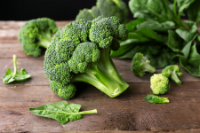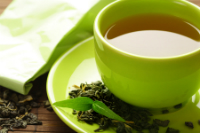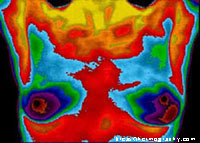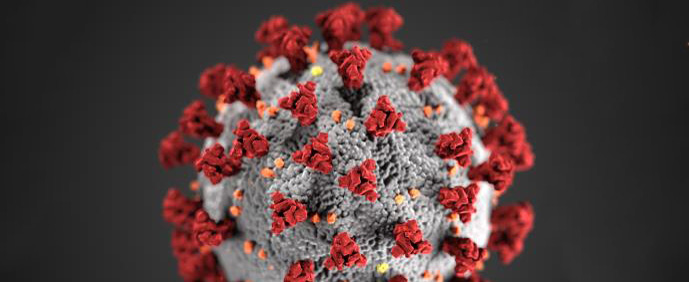Boost Breast Health with these Lifestyle Tips
One in eight women will be diagnosed with breast cancer and, each year, about 40,000 women die from the disease. From puberty through the elder years, it’s imperative for a woman to take care of her breasts, from the inside out, both physically and emotionally.
The “bust musts” for breast health go beyond screenings and routine self-exams. Until recently, the prevalent thinking was that screenings are the best way to detect and treat cancer before it metastasizes. However, increasing numbers of false-positive tests have led to unnecessary medical treatment.  In some cases, screenings have failed to detect active tumors. It could be that timing for screenings should be personalized, based on health and family history, age, and lifestyle habits.
In some cases, screenings have failed to detect active tumors. It could be that timing for screenings should be personalized, based on health and family history, age, and lifestyle habits.
More important than early detection is the power of prevention in the hands of every woman. This includes properly performing breast self-exams (BSE), and taking care of body and mind in ways that boost breast health.
Eight Ways to Boost Breast Health
Know Your Bosom. It’s important for a woman to be familiar with the look and feel of her own breasts. Performing a monthly BSE is the best way to detect a lump or other abnormality. This video will help you do it right.
Chill Out. In general, excessive stress has negative effects on health. Research indicates that stress can also increase your risk for breast cancer as well as its recurrence (Ohio State U). Because stress impairs immunity, there’s evidence that it can alter how aggressively cancer develops. To manage stress, try yoga or meditation.
Go for Green. A component of green tea called epigallocatechin gallate (ECCG) is a powerful antioxidant that is believed to suppress the growth of new blood vessels in tumors. ECCG also seems to play a role in keeping cancer cells from destroying healthy tissue. Enjoy at least a cup or two of tea daily.
Get Crunchy. Broccoli, Brussels sprouts, cauliflower and other  cruciferous vegetables contain cancer-fighting compounds that convert excess estrogen into a form that is more “friendly” to a woman’s body. Women who eat a high percentage of cruciferous veggies on a daily basis are less likely to develop breast cancer. Enjoy a “crunchy salad” or add steamed mixed veggies to your daily meal plan.
cruciferous vegetables contain cancer-fighting compounds that convert excess estrogen into a form that is more “friendly” to a woman’s body. Women who eat a high percentage of cruciferous veggies on a daily basis are less likely to develop breast cancer. Enjoy a “crunchy salad” or add steamed mixed veggies to your daily meal plan.
Get Spicy. The turmeric plant contains curcumin, which is known to support a strong immune system. Some research shows curcumin can reactivate genes that suppress tumor development and stave off cancer cells. Add a curry night to your weekly meal plan.
Fiber Up. Fiber from fruits and whole grains helps rid the body of toxins. In addition, flax contains cancer-fighting compounds, called lignans, that can block the negative effects of excess estrogen on cells. Sprinkle flaxseed on your salad or yogurt.
Decrease Sugar. Increased insulin enhances estrogen production and can increase cancer risk.
Reduce Chemicals. Many chemicals in food, body and home products are similar to estrogen and increase cancer risk.
References
Food for Thought. . .
“What lies behind us and what lies before us are tiny matters compared to what lies within us.“
– Ralph Waldo Emerson
More to Love about Green Tea (Camellia sinensis)
 Next to water, tea is the most consumed beverage in the world. There are health benefits to drinking a variety of teas, and the more pure the leaf in your brew, the better. Green Tea leaves, which don’t go through an oxidation process, have the richest nutrient profile. Public health scientists report that people who drink at least four cups of green tea daily have a lower overall risk of cancer; additionally, pre- and post-menopausal women have a lower overall risk (or “lower overall incidence”) for breast cancer.
Next to water, tea is the most consumed beverage in the world. There are health benefits to drinking a variety of teas, and the more pure the leaf in your brew, the better. Green Tea leaves, which don’t go through an oxidation process, have the richest nutrient profile. Public health scientists report that people who drink at least four cups of green tea daily have a lower overall risk of cancer; additionally, pre- and post-menopausal women have a lower overall risk (or “lower overall incidence”) for breast cancer.
Green Tea contains powerful micro nutrients called polyphenols. One of these, known as EGCG (epigallocatechin-3-gallate), plays an important role in cancer prevention. Lab tests and animals studies show that EGCG inhibits an enzyme required for cancer cell growth. Purdue University researchers found “EGCG, in lab studies, was also able to kill active cancer cells with no ill effect on healthy cells.” These chemicals are powerful antioxidants with “scavenging” activity that can protect cells from damage.
Green Tea for health enhancement and cancer prevention is well established. However, there hasn’t been extensive research on the effect of tea and/or tea polyphenols in human cancer treatment. Scientists are pursuing clinical trials to determine the role of green tea consumption, as well as a dietary supplement of EGCG, in the treatment of different cancers.
To reap the health benefits of tea, drink pure, fresh hot or iced tea. The processing necessary to bottle tea for supermarket shelves actually degrades the quality and availability of nutrients.
References
Thermography
One key to breast cancer survival is early detection. And breast screenings remain the gold standard for that early detection, typically in the form of routine mammograms. However, often painful, and sometimes inaccurate, mammography has generated false-positive test results, leading women to unnecessary medical treatments. To counter this, an imaging test known as breast thermography is becoming an important adjunctive procedure.
What is thermography?
Breast thermography (also known as Digital Infrared Imaging-DII) is a 15-minute, pain-free, non-invasive test that shows the structure of your breast while measuring heat emanating from the surface of your body. Changes in skin temperature are the result of increased blood flow. This is important because even early-stage cancers need a blood supply to bring in nutrients to feed the cancer.
Because temperature change shows up as colors brighter than those of healthy cells, thermography can identify precancerous or cancerous cells earlier and with less ambiguous results. Studies indicate that an abnormal thermography test is 10 times more significant as a future risk indicator for breast cancer than having a family history of breast cancer.
When to Test (may vary based on personal and family medical history)
Age 20 Initial thermogram
Age 20 – 29 Thermogram every 3 years
Age 30 and over Thermogram annually
References
[hr]
Guiding Principles




